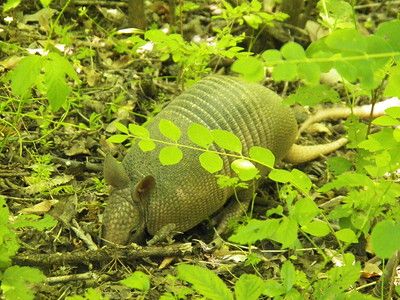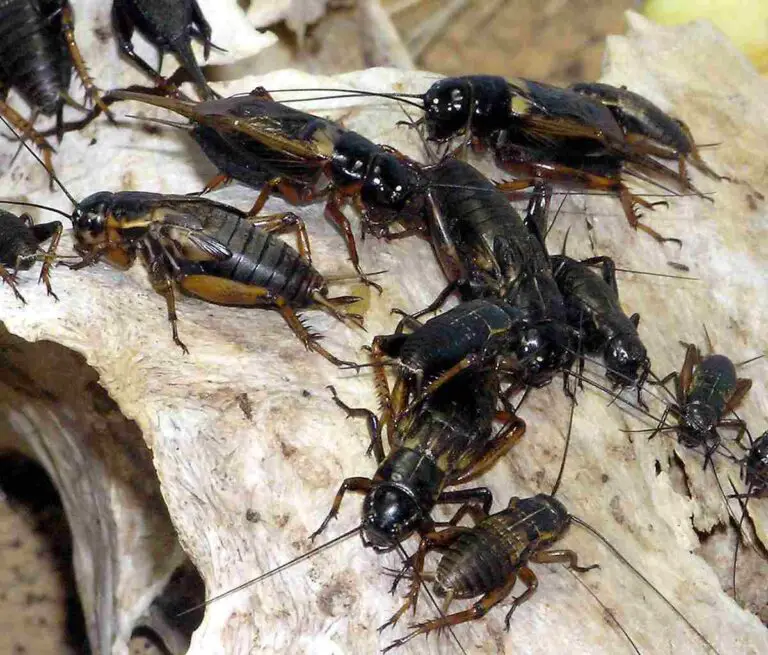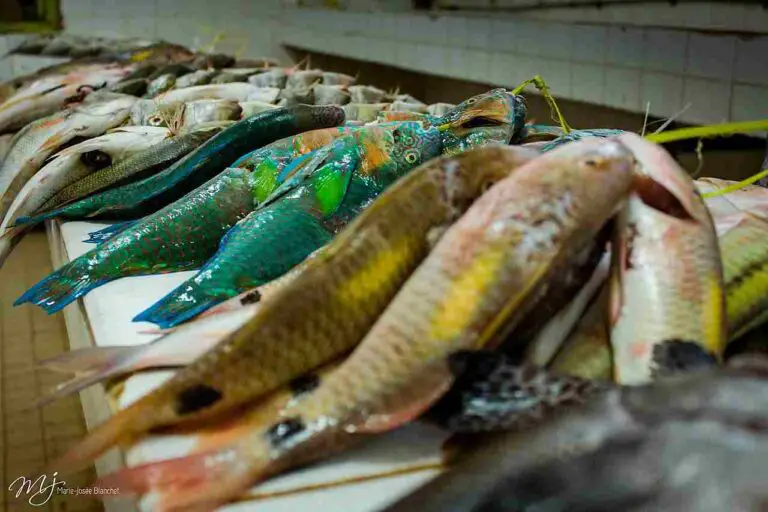5 Biotic Factors in the Forest Ecosystem and Their Characteristics
Biotic factors in the forest ecosystem are; forest-producers, herbivorous, carnivorous and omnivorous consumers, as well as biological processes.
This article discusses biotic factors in the forest ecosystem and their characteristics, as follows;
1). Forest Producers (as one of the Biotic Factors in the Forest Ecosystem)
Producers in the forest are autotrophic organisms that are able to manufacture biomass and bioenergy from inorganic materials and energy sources like solar radiation (especially visible light), carbon dioxide, and water.
By using these inorganic materials, forest producers illustrate the mutual dependence that typically exists between biotic and abiotic factors in all ecosystems.
The forest producers are categorized as biotic components because they are organic in origin, composition and (metabolic/biochemical) processes.
Also called 'primary producers', producers in forests are immensely important, not only to their immediate ecosystem, but to the global-environmental system as a whole.
One of the reasons why forest producers are immensely important is due to their role as ultimate energy and food sources of the ecosystem [3].
The producers occupy the basal (lowest) trophic level of food chains, food webs, energy and biomass pyramids; from where they provide nutrition to all other organisms, either directly or indirectly.
Being a terrestrial ecosystem with high species richness and biodiversity; forests are dominated by near-countless types and species of autotrophic producers. These autotrophs are mostly vascular and non-vascular plants, although some non-plant autotrophs also occur.
Examples of forest producers are trees like Douglas-fir, as well as herbs, shrubs, mosses, liverworts, algae and lichens.
The trees are especially dominant in size, biological and physicochemical influence.
Producers are what make the forest an efficient, natural carbon sink. Through their roles in carbon sequestration and photosynthesis, these biotic components are crucial to the conservation and recycling of forest resources in carbon, nitrogen and oxygen cycles, among others.
In addition, several forest plants serve as habitats to both vertebrate and invertebrate organisms.
2). Herbivorous Forest Consumers
Herbivorous forest consumers are organisms whose diet primarily comprises of organic matter from autotrophic organisms like plants.
These organisms are also referred to as primary consumers, because they feed directly on the producers. Majority of them are grazers, that consume the parts of vascular plants like leaves; stem and seeds.
By consuming plants, forest herbivores play a crucial ecological role, namely of regulating the trend of energy-transfer across trophic levels. Their activities influence the adaptation, speciation and population-dynamics of autotrophs, while they also serve as food sources to non-herbivorous consumers.
Examples of forest herbivores are large mammals like deer, some rodents and insects.
The large mammalian herbivores are a relatively popular group in forests, due to their size, diversity, wide geographic distribution, and population size. They are also a common food source for predators.
Herbivorous forest rodents include hares and squirrels, whose habitats range from trees to ground burrows. Their diet include a broad range of species and parts of plants, which include; seeds, bark, nuts and fruits.
Insects like beetles and grasshoppers are also herbivorous forest organisms.

3). Carnivorous Forest Consumers (as one of the Biotic Factors in the Forest Ecosystem)
Carnivorous forest consumers include all heterotrophic organisms in forests that feed exclusively on other heterotrophs.
They are often classified as secondary consumers, since the carnivores mostly depend on primary consumers (that is; herbivores) as the source of their food and nutrition.
Activities of carnivores help to establish the ecologic structure of forest ecosystems; by maintaining a state of equilibrium in the distribution of mass and energy across different trophic levels.
Carnivore populations in forests are generally smaller than those of herbivores and plants, in successive order. This results in an upright-biomass pyramid, with larger amounts of biomass occurring in lower trophic levels.
On the contrary, aquatic ecosystems like oceans tend to have more biomass occurring at higher trophic levels than lower ones, so that the resulting biomass pyramid from this relationship is often an inverted one [2].
This distinction can be attributed to the shear size-differences between predator and prey in aquatic ecosystems, which is in the order of several multiples (as exemplified by the size-difference between whales and small fish).
In forests, the size difference between carnivores and herbivores per-individual is not that vast, and the herbivores multiple more due to factors like greater availability of food (vegetation).
Carnivores in forests constitute a very diverse group, whose members in any given location vary with geographic factors like climate. This is obvious in the difference between carnivores found in tropical and temperate forests respectively.
Examples of tropical forest carnivores are; armadillos, giant anteaters, jaguars, anacondas, and harpy eagles; while examples of temperate forest carnivores are; puma, bobcat, coyote, and wolf.
The dietary range of these animals spans across insect, reptile, bird, amphibian and mammalian categories.

4). Omnivorous Forest Consumers
Omnivorous forest consumers, or 'forest omnivores' are a group of organisms whose diet is highly diverse, so that the are able to consume both animal and plant matter for nutrition.
Some of the forest omnivores; like bear, are classified as tertiary consumers or apex predators, because they are less-vulnerable to predation than other consumers within their environment.
In general, the forest omnivores derive their feeding habits from multiple generations of adaptive change [1]. This change is usually influenced by unique conditions of food-resource depletion, where the unavailability of preferred food sources causes the organism to adopt other edible materials as food.
Omnivores are resilient to unprecedented changes in the ecologic conditions of their surrounding, such as sudden migration of potential prey due to deforestation, and/or the environmental impacts of climate change and global warming.
Because of their dietary adaptability, forest omnivores have a wide variety of potential food sources.
Examples of omnivorous forest consumers include; bears, wild boars, skunks, and racoons.

5). Biological Processes (as one of the Biotic Factors in the Forest Ecosystem)
As the term implies, 'forest biological processes' are the mechanisms behind all phenomena in forests that primarily involve organic elements.
The biological processes that occur in forest ecosystems, are essential to the sustainability of all biotic components of these ecosystems. They represent biological energy conservation, biomass recycling, organic metabolism, productivity, and the continuity of species.
Examples of forest biological processes are; feeding, respiration, photosynthesis, pollination, reproduction, and biodegradation.
Conclusion
Biotic factors in the forest ecosystem are;
1. Forest Producers
2. Herbivorous Forest Consumers
3. Carnivorous Forest Consumers
4. Omnivorous Forest Consumers
5. Biological Processes
References
1). Chubaty, A. M.; Ma, B. O.; Stein, R. W.; Gillespie, D. R.; Henry, L. M.; Phelan, C.; Palsson, E.; Simon, F. W.; Roitberg, B. D. (2014). "On the evolution of omnivory in a community context." Ecol Evol. 2014 Feb;4(3):251-65. Available at: https://doi.org/10.1002/ece3.923. (Accessed 22 May 2023).
2). Mourier, J.; Maynard, J.; Parravicini, V.; Ballesta, L.; Clua, E.; Domeier, M. L.; Planes, S. (2016). "Extreme Inverted Trophic Pyramid of Reef Sharks Supported by Spawning Groupers." Curr Biol. 2016 Aug 8;26(15):2011-2016. Available at: https://doi.org/10.1016/j.cub.2016.05.058. (Accessed 22 May 2023).
3). Valladares, G.; Cagnolo, L.; Salvo, A. (2012). "Forest fragmentation leads to food web contraction." Oikos 121(2):299-305. Available at: https://doi.org/10.2307/41409047. (Accessed 22 May 2023).




